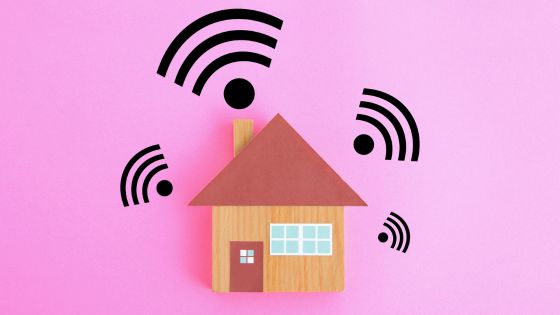Having a fast and reliable Wi-Fi connection is essential today, whether you’re running a small business or wanting to stream that latest Netflix show at home.
Slow or glitchy Wi-Fi is a major frustration, but thankfully, there are several things you can take to boost your Wi-Fi speed.


In this guide, I’ll discuss the 8 things I’ve done to boost my home Wi-Fi performance.
What’s Your Current Wi-Fi Speed?
Before diving into the solutions, it’s important to understand how fast your current Wi-Fi is.
You can easily check your internet speed online here.
Now, compare this with the speed promised in your internet plan. If there’s a significant difference, the following tips can help bridge that gap.
1. Reboot Your Modem and Router
The age-old advice of turning your equipment off and on again holds true for Wi-Fi routers and modems. This simple action, known as power cycling, can resolve many common connectivity issues.
Remember to do this for both your modem and router.
2. Secure Your Wi-Fi Network
An unsecured Wi-Fi network is not just a security risk; it can also be slower due to unauthorised usage. Why would you want your neighbours using your Wi-Fi connection and taking all your bandwidth?
Ensure your network is password protected to prevent unwelcome access.
3. Optimal Router Placement
The location of your router significantly affects Wi-Fi performance. Wi-Fi signals aren’t magical and can be blocked or slowed down by barriers
Place your router in a central, open area, away from obstructions like metal objects, thick walls, and water bodies, which can impede signal strength.
4. Adjust Router Antennas
If your router has external antennas, adjust them for better signal distribution. Vertical positioning helps spread the signal horizontally, while horizontal antennas assist in vertical signal distribution.
5. Choose the Right Wi-Fi Frequency
Most modern routers offer dual-band frequencies: 2.4GHz and 5GHz.
The 5GHz band provides faster speeds but over shorter distances, while 2.4GHz offers broader coverage. Select the band that best suits your usage needs.
6. Expand Your Wi-Fi Range
If your router’s signal doesn’t cover your entire space, consider using Wi-Fi extenders, mesh Wi-Fi systems, or wired access points to increase coverage.
It works by receiving the existing Wi-Fi signal from your router, amplifying it, and then transmitting the boosted signal. This helps to extend the Wi-Fi network to areas of your home or office that may have poor or no connectivity due to distance, walls, or other obstacles.
7. Reduce Network Load
Disconnect devices that aren’t in use. Too many devices on the same network can slow down your Wi-Fi speed. Some routers allow you to see and manage connected devices through a mobile app or web interface.
Common sources of bandwidth consumption include:
- Smart TVs, streaming sticks (like Roku, Amazon Fire Stick), and gaming consoles streaming high-definition or 4K video can use a lot of bandwidth.
- Devices used for online gaming, especially when playing graphics-intensive multiplayer games, consume considerable bandwidth.
- A large number of connected smart home devices like security cameras, smart thermostats, smart speakers, and IoT (Internet of Things) gadgets can collectively drain Wi-Fi bandwidth.
- Computers or devices used for torrent downloads and uploads can consume a significant amount of bandwidth, especially if multiple files are being shared simultaneously.
- Devices infected with malware or engaging in background activities without the user’s knowledge can also use up bandwidth.
8. Upgrade your equipment
If you’re anything like me, you are probably using a router and modem that have been in place for years. Well, equipment gets old and often, you are better off replacing it entirely rather than trying to upgrade it.
Old routers and modems can be bottlenecks for speed. Investing in newer, more advanced equipment can significantly improve your Wi-Fi performance.
So, jump online or contact your local nbn provider and ask them about the latest routers and modems and ones that are compatible with your internet plan and home internet capability
9. Update Router Firmware
Keeping your router’s firmware up to date is crucial for both security and performance. It’s like running the latest version of Microsoft or iPhone version. Check your router settings to ensure you have the latest firmware version.
10. Evaluate Your Internet Plan
If your Wi-Fi speed matches what your internet plan offers but still feels insufficient, it might be time to upgrade to a higher-speed plan.
Internet service providers are all vying for your business, so shop around and find a plan that meets your needs. Most plans now come with:
- Unlimited data
- Different speed tiers
- No lock in contract
- Affordable pricing.
Wrap-Up
Improving your Wi-Fi speed can dramatically enhance your online experience. By following these tips, you can ensure a faster and more reliable connection in your home or business.
Remember, sometimes the simplest solutions, like restarting your router, can make a significant difference.


























